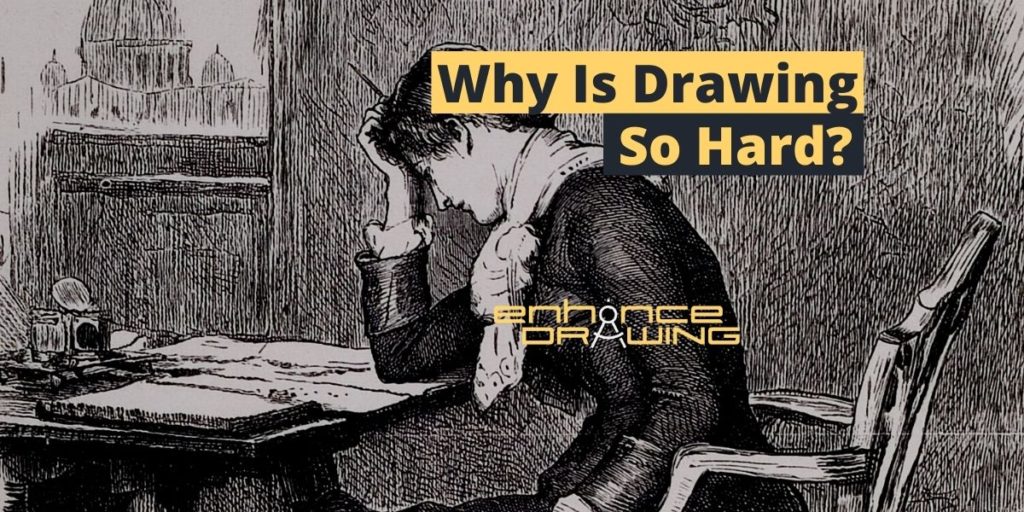
After some weeks or months of practicing drawing, no one can help but wonder, why is drawing so hard? I was there, and I couldn’t understand it either when I started to draw. But after years of drawing, talking to many different artists, and studying, I have an answer for you.
Drawing is hard because our brains interpret anything we see as a whole, and our eyes don’t create an authentic image of what we draw. Drawing becomes even more difficult because we tend to draw things as we know them, but not as they are. Learning to see is hard, so drawing is hard.
But drawing is hard not only because of that but many other aspects as well. Below are the five main reasons drawing is complicated (and what you can do about it to make it easier).
5 Reasons Why Drawing Is So Difficult
Although there can be more than five reasons drawing is difficult, I consider these to be the most common among beginner artists. But apart from giving you the reasons why drawing is hard, I want you to have a solution to those problems. Below, you’ll find a solution for each point.
1- You Haven’t Develop Your Observational Skills

It is common for us artists to believe drawing is just making marks on paper, but in truth, it is so much more than that. Having poor observational skills is the main reason drawing is hard for most artists.
When you begin to draw, it is natural to draw what you know and not what you see, even when you’re directly looking at a reference. Our brains interpret everything as a whole by selecting minor reference points across an image to give it meaning quickly. We’re especially good at identifying faces because of how familiar we are with them, which is why we see them in the weirdest places.
To give you an example, if I tell you to draw a line, you will easily accomplish that in 2 seconds, and I’m sure it will look almost the same. Then, if I ask you to draw three lines, you will still achieve it in no time and with much accuracy. But If I ask you to draw 500 lines, you might start to have complications. Well, those 500 lines can be a complete drawing, and they’re no different from the three lines you drew before. It’s just that there are more now, but the essence is the same.
If you have a reference, and you take your time to understand and draw something line by line, you will be able to draw almost anything.
Solution
Forget everything you think you know about the subject you’re drawing. If you can’t draw the subject you want without using a reference, you don’t understand it yet, so if you start to draw it thinking you know it, your results won’t be as good as they could be. To do it, take your reference image and turn it upside down, and then draw it part by part. Drawing upside down is the most effective way to teach your brain to draw what it sees and not what it thinks it sees, and I always recommended it.
I have a blog explaining every step you need to know and follow to draw upside down, with reference images and exercises. I know it sounds crazy, but trust me, you will be amazed by the results!
2- You Don’t Understand Perspective
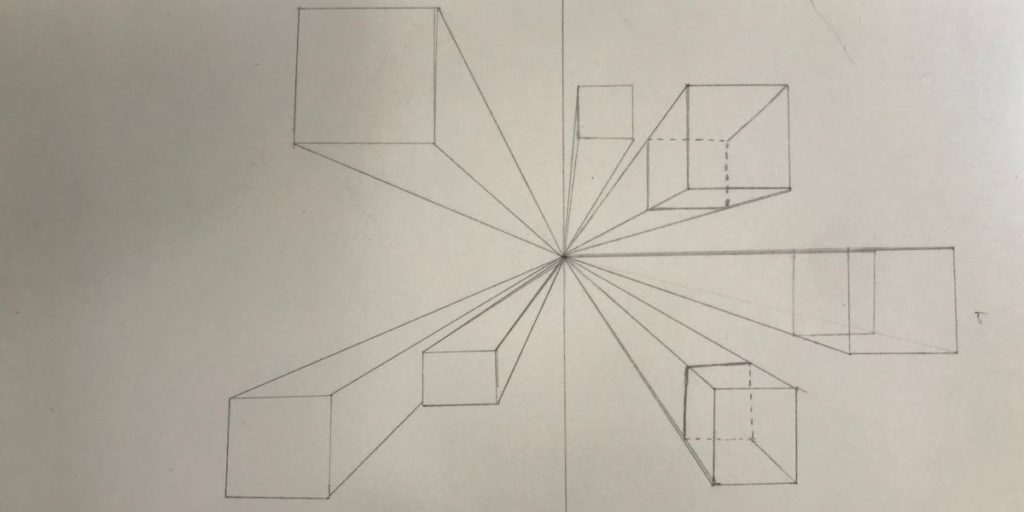
Perspective is one of the most complex things to understand in drawing, and another big reason drawing is so hard. We excel at identifying what an accurate perspective looks like, but we’re bad at representing it. If you ask any professional artist, they will tell you that the secret to achieving a proficient drawing is mostly understanding perspective.
But why is perspective so critical in drawing? Well, perspective is essential because everything we see has it, and when you draw without it, your drawings will inevitably look flat and weird. Almost every drawing is an easy drawing until it is represented in an odd perspective. But if you understand the basics of perspective, your drawings will naturally improve at a much faster pace.
Solution
Study perspective, but not in-depth if you’re just beginning to draw. You can start by going for principles like 1-point, 2-point, and 3-point perspective. You will see that most tutorials will explain these examples using cubes, cylinders, triangles, or any other simple shapes to illustrate perspective. I suggest you study it using the same simple shapes and avoid going for complex shapes like faces or bodies in perspective.
If you feel you understand this very well, test yourself: draw a cube from 20 different viewpoints using different perspectives and see if you can do all of them without using references. If you cannot do it, study the principles. I promise it is worth it.
3- You Need To Improve Your Line Quality
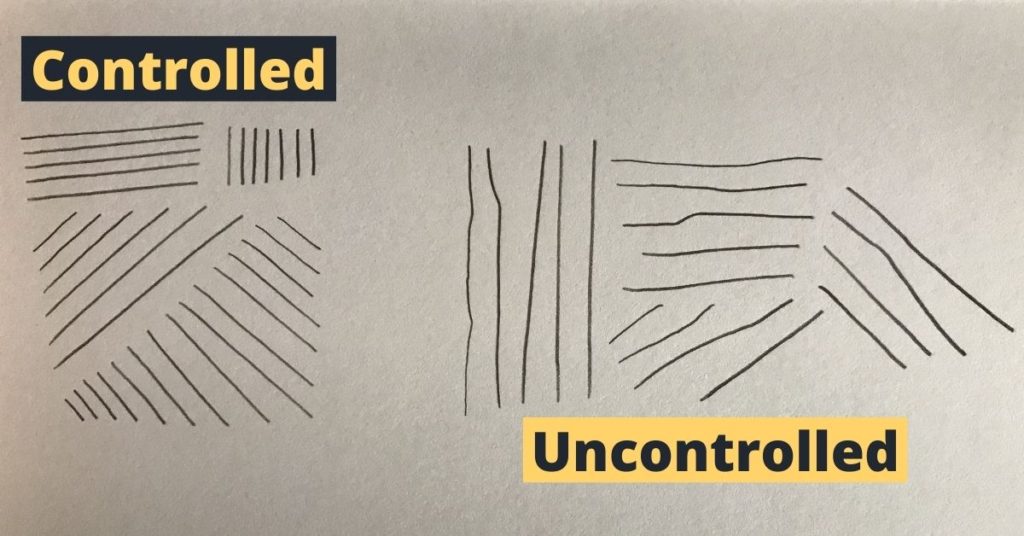
The third most common reason people find drawing difficult is related to their motor skills. Drawing is not only about theory but also technique and practice. Some beginner artists have very good observational skills and know where lines should go. Still, when they try to draw a straight line or circle, they cannot do it properly. Luckily, you can fix this pretty easily by practicing.
The aspect we just talked about is called line control. But more factors contribute to line quality, including line thickness, force, and fluidity. A good drawing should have many different line types across it to make it more expressive and alive. Depending on your goals, you can make your drawings look cartoonish or realistic by simply changing your line quality.
This concept is better understood when you look at it, so I have some examples to show you.
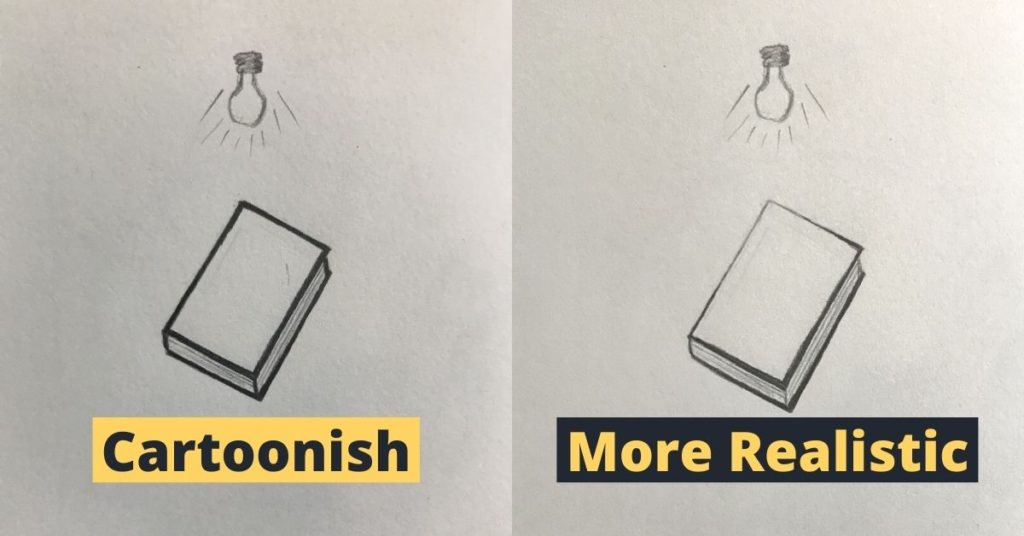

As you can see, having good use of line quality can drastically improve how your drawings look and make you a better artist.
Solution
If you feel like your drawing lacks line quality, you can use this post I published about line quality, where I show many more examples and exercises you can practice to improve your lines. There, you will see how light, distance, and texture affect how lines should look in a drawing. And the exercises are very simple to replicate.
4- You Don’t Know What You’re Drawing
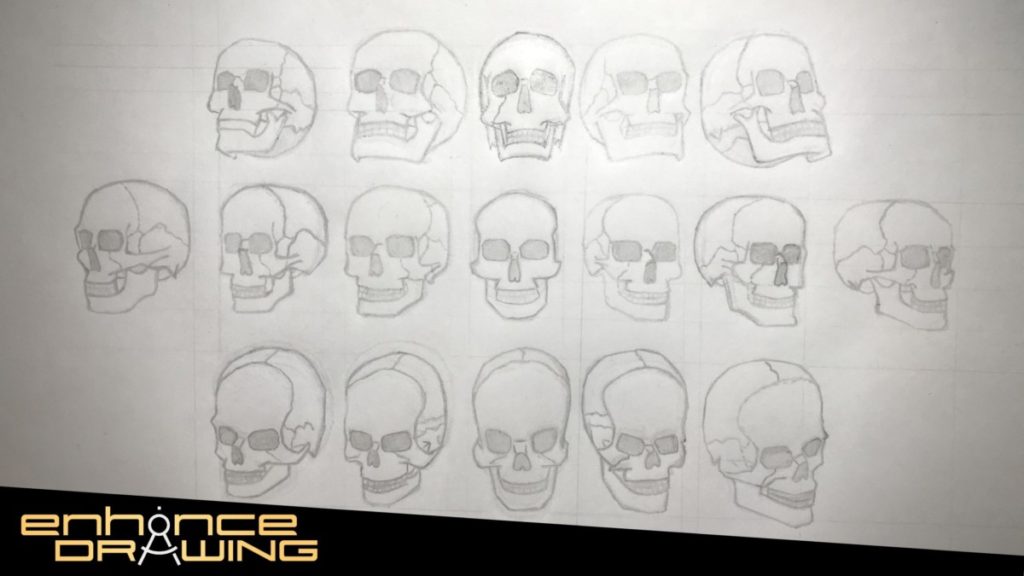
Another reason that makes drawing hard for beginner artists is that they draw things they don’t know or understand. So when you’re drawing -assuming you want to improve- it is crucial to list the aspects you want to improve in your drawings and study them. That list can include anything you want to draw, from subjects like perspective or value to characters or people. I have a list of 101 anime drawing ideas you can check if you need some inspiration!
To make this clearer, I’ll give you an example. If you have never drawn a skull and I ask you to draw one from memory, the drawing will probably look inaccurate. What is more, if I give you a reference image and ask you to draw it again, unless you’re already a skilled artist, the result will be better but still inaccurate. Not being able to draw something accurately happens because you don’t know the subject well enough to draw it easily. However, you can study it and learn to draw it. Drawing, in this case, is hard because you don’t understand the subject you’re drawing.
Solution
Pick a subject and draw so many times you can draw it without using extra references. Of course, you will have a hard time initially, but eventually, you will draw it so easily you will not regret the practice you did. I have a blog explaining how to draw without copying, in which I introduce a way to study a subject to learn to draw it from memory.
5- You Haven’t Drawn Long Enough

Drawing is a skill, and as with any skill, it requires time and practice to master it. The fifth most common reason drawing is difficult for many people is that they haven’t drawn long enough. For most beginners, drawing will always be difficult until they learn the basics. However, if you have been drawing consistently for five or more years, drawing won’t be as hard as it is for other people.
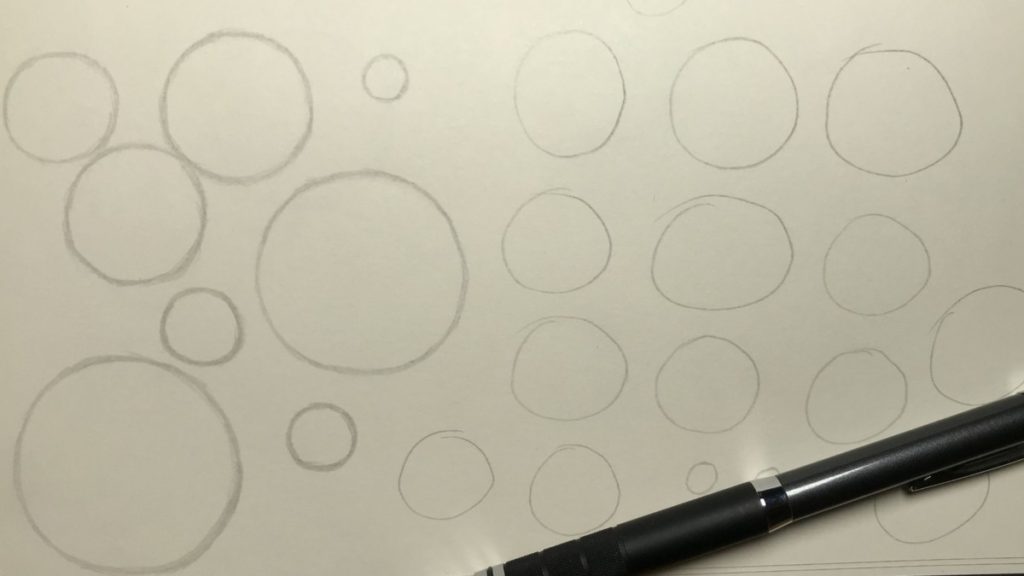
When I started to draw, drawing circles was very hard, but then I drew so many of them that they became easier over time. The same happened with skulls, eyes, hair, and anything I wanted to draw, but the more I drew “hard things”, the easier they became.
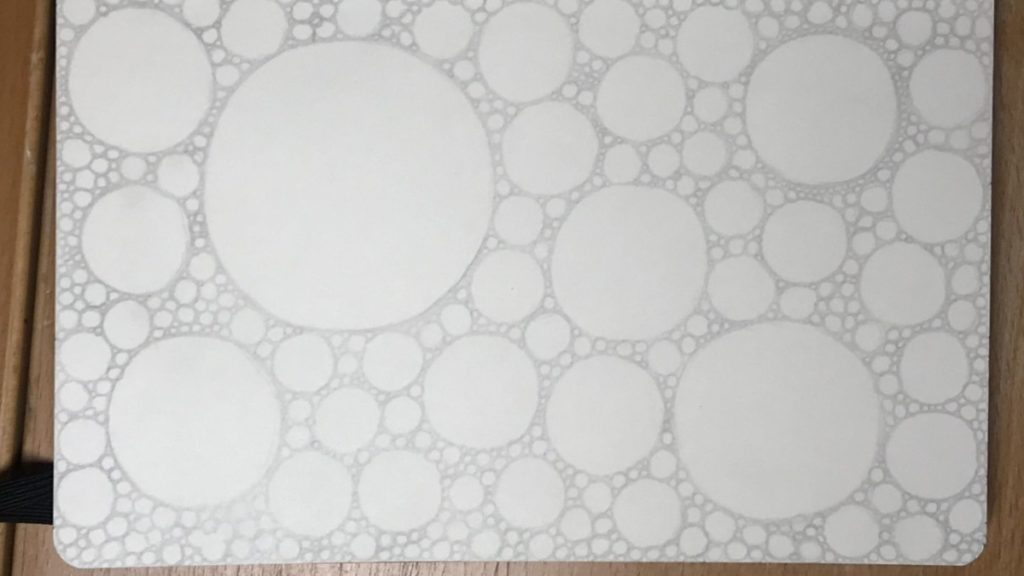
And when you’ve been drawing for some years, you realize there are ways to learn to draw things faster. For example, as soon as I understood many drawing principles, I could draw almost anything much more easily. I also learned that drawing the same subject from many different perspectives was the best way to learn to draw it from memory afterwards. So when I was a complete beginner, learning to draw circles correctly took me around 40 hours of practice, but if I had to learn to draw circles right now that I know more things, it would’ve taken me about 4 hours.
You need to draw more if you want to draw better and make drawing easier.
Solution
Apart from drawing the time required, you can speed up how quickly you can get good at drawing by studying under the proper method. Depending on the study plan you follow, learning to draw anything could take you from 1 to 3 years, so it is best to follow a good routine. I have a blog about how to get better at drawing anime you can check; although it is focused on anime, it pretty much works for any drawing style you want to learn.
Is Drawing Hard?
Drawing is hard when the artist doesn’t have much knowledge about techniques and basic principles. Any artist that doesn’t understand these drawing aspects will consider drawing is very hard: perspective, form, line control, value, and correctly seeing are the fundamentals that differentiate pros from beginners. Let’s talk about every aspect.
- Perspective: Everything we see around us has a different perspective depending on our point of view. Since we are so familiar with everything being in perspective, we excel at identifying it and notice when anything is wrong. However, we’re not naturally good at representing it, so our brain tends to draw everything like it has two dimensions and not three.
- Form: It may sound unbelievable, but if you know how to draw cylinders, squares, triangles, and other basic shapes in perspective, you will pretty much be able to draw anything. You can narrow down any subject you draw into basic shapes. For example, if you know how to draw a cylinder in any perspective, you will draw an arm in any perspective. A bit harder, of course, but not as hard as you may think.
- Line Control: This is more of a physical skill than a mental one. If you know and understand every drawing fundamental but don’t have line control, your drawings won’t look like you expect them to look. For instance, if you know you need to draw a straight line, but it ends up crooked, your drawing won’t look as you pictured it. You need your hand to do what you’re thinking.
- Value: Just as anything we see around us has perspective, everything also has value; value represents light and dark. Although you can draw anything without value, adding it will make your drawings have more depth and look real and natural.
- Correctly seeing: As we mentioned at the beginning of this post, correctly seeing is the most important thing when drawing. You can know everything about drawing, but all your drawings will represent an incorrect reference if you see things incorrectly.
In conclusion, if you know these principles, drawing won’t be so hard. But is learning these principles hard?
Is Drawing Hard To Learn?
As mentioned above, there are some main principles you need to know to separate yourself from a beginner artist to a more skilled one. In my drawing journey, I’ve realized that the most challenging thing about drawing is not doing it or learning it but being consistent. I have a blog about teaching yourself to draw that could greatly help you get closer to your artistic goals.
Some topics are harder than others, but I promise you that you will be able to master any subject you pick with enough time and practice. For example, if you want to learn and understand perspective, you will have to draw many shapes in 1, 2, and 3 point perspectives; every day for at least 2 hours. When you start doing it, you will find doing the exercises isn’t exceptionally complicated, but they will require time and dedication from your side.
Exercises won’t be extremely hard unless the subject you’re studying is very complex, but this doesn’t mean every practice exercise will be easy. For example, exercises like drawing well-proportioned faces in perspective will take you more time to master, but anyone will be able to do it with enough time.
It’s cliché, but it’s true: if you want to get good at anything, you need to put in the work and practice as much as possible. So get into a drawing routine and follow it thoroughly; results will show.
How Can I Make Drawing Easier?
To make drawing easier, start by picking simple study subjects or references to draw from, as complex images or techniques might overwhelm you initially. You can also draw things you like to help you stay motivated and continue drawing more easily.
The hardest thing for beginner artists is to draw consistently, mostly because they don’t get encouraged by the results of their effort. However, there are many misconceptions about how quickly you can get good at drawing, and if you expect fast results, you will think you’re just bad at drawing and stop doing it. I have a blog about how long it takes to learn to draw anything to give you a better idea about the time you need.
Once you know how long it will take you to draw what you want to draw, set your goals up and plan to achieve them. Remember, the most important thing here is to have fun doing it!
What Is The Most Difficult Thing To Draw?
According to many artists, hands are the hardest thing to draw. This is because hands have so many different positions that mastering how to draw them correctly represents quite the challenge. Faces and hair are also very hard things to draw.
If you’re just starting to draw, you should avoid hard things to draw. Usually, drawing complex things will cause more bad than good in your learning process and confidence. I have a blog about the hardest thing to draw, where I asked artists for their opinion to create a list with the hardest things to draw. It’s very interesting to see that people think it’s hard to draw!
I hope this post resolved all your doubts about drawing being hard! I have many blogs about drawing on this page if you want to continue reading.
Happy drawing!
